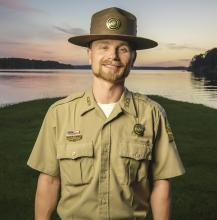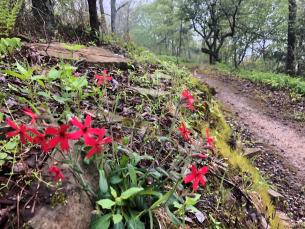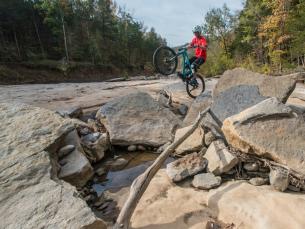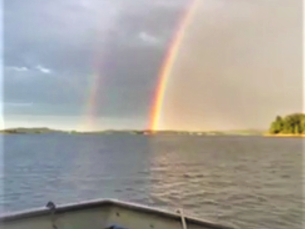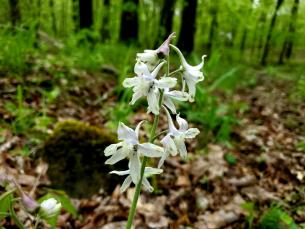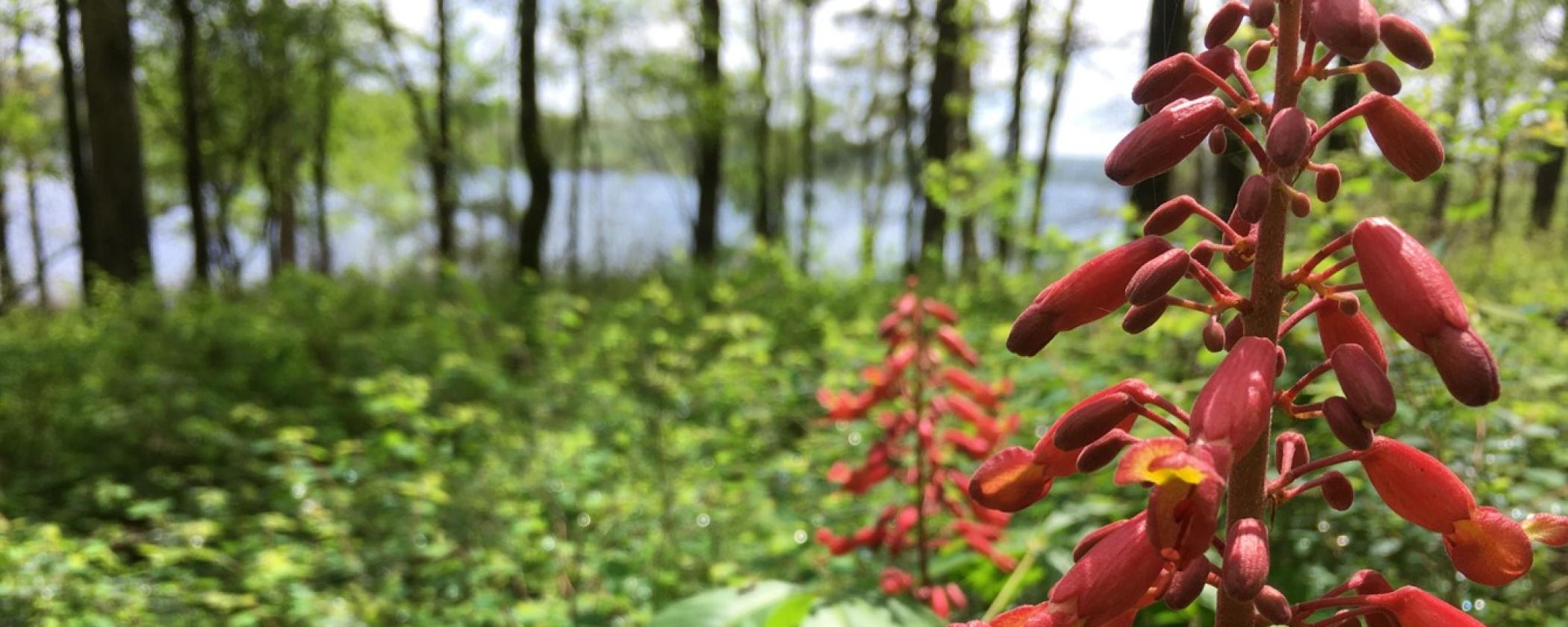
Photo Essay: DeGray in Bloom
By: David ArmstrongIn the foothills of the Ouachita Mountains, resting on the shores of a pristine 13,800-acre lake lies DeGray Lake Resort State Park. As Arkansas’s resort state park, DeGray offers a wide range of amenities and experiences to choose from. Overnight accommodations range from a 96-room island lodge to 82 Class B campsites to three YURTs.
Guests can find their escape by hiking, fishing, swimming, boating, golfing, horseback riding, and more. In addition to being your outdoor recreation hub, the park serves as a haven for a variety of native flora and fauna. Lake and forest habitats meet to create a unique community of wildlife in this special place.
Each spring, DeGray Lake Resort State Park is adorned in an array of colorful blooms, some of which can easily go unnoticed. This photo essay is a tribute to just a handful of samples found around the park. See how many you recognize.
![up close view of small white and pink flower contrasted against brown, dormant grass]](/sites/default/files/inline-images/1%20spring%20beauty.jpg)
spring beauty: Usually one of the first heralds of spring, blooming as early as February, this tiny, abundant wildflower is easily glossed over as ground cover or simply “a little white flower.” As you can see, closer inspection reveals that there is more to this little guy than first meets the eye! The fields behind the visitor center are painted by large swaths of these little, white blooms early each spring.
buttercup: While the name conjures up a lip-smacking, delicious treat for many, this wildflower could not be further from an indulgent sweet. In fact, when fresh, the plant is quite toxic to humans and animals alike. So, better stick to enjoying this one (and every wildflower) with the eyes only.
red buckeye: While not a wildflower, the vibrant red blooms of this humble-statured tree easily catch the eye of humans and pollinators alike each spring. Enjoyed by hummingbirds, the bitter tasting, toxic plant is avoided by most other wildlife. In days gone by, it was not uncommon to meet folks toting one of the large buckeye seeds around in their pockets as a sort of good luck token. The effectiveness of this practice remains in question to this day. These little trees can be found in abundance on the back nine holes of the disc golf course.
Ohio spiderwort: This is one of several spiderwort species found in the park, which range in color from royal blue, as seen here, to pink or purple (spiderwort and hairy spiderwort), as well as white (Ozark spiderwort). Spiderwort species are reportedly edible and can provide fantastic blasts of color to salads or other edible arrangements. Just be sure to put this to the test outside the state park – please do not pick the wildflowers! The Towering Pines Trail is a good place to look for these pretty blooms.
wild garlic: This unique, almost alien-looking wildflower often goes unnoticed to passersby due to its small stature. However, it leaves a lasting impression on the ole olfactory system whenever it is trimmed by a lawn mower – the nose knows! Look for these in open fields, along shoulders of the road, or when you are searching for your golf ball in the rough.
lyreleaf sage: Closely related to the garden sage found in many a kitchen spice rack, this member of the mint family is the only sage native to the United States. These flowers can be found throughout the park, but are found in clusters along the front nine holes of the disc golf course and the Green Heron Trail.
yellow thistle: Some might debate the inclusion of thistle among the beautiful blooms of DeGray due to its thorny, standoffish, and often invasive nature. Albeit, its striking colors and pointy features demand at least a second glance. The blooms, which can range from pale yellow to pale purple in color, somewhat resemble strawberries just before opening, and they are savored numerous pollinators, from butterflies to hummingbirds. Take a closer look the next time you spot one – just don’t touch! Solitary examples can be spotted from the road on the golf course and in roadside ditches.
hairy phacelia: What’s in a name? While “hairy phacelia” may leave some wondering if the plant was named after a very memorable discoverer, in this case it comes from a blend of Latin and Greek. The Latin word hirsuta speaks to the plant’s hairy stem, while the Greek word phakelos, which means “cluster”, refers to the clustering of flowers. Phakelos…phacelia…so, there you go!
cutleaf evening primrose: This small, light-yellow flower is easily passed over and often tread upon as it is commonly found growing in lawns, gardens, curbsides, and fields. As the flowers fade, they turn to a reddish color. Look for these in the grassier areas of the park, including along the roads and behind the visitor center.
violet wood sorrel: With its shamrock-style leaves, this plant could be easily mistaken for a clover before its striking pink flowers emerge. Another related species commonly seen around the park is the yellow-flowering creeping lady’s sorrel (another name that gives one pause to wonder…) These flowers can be found growing in many areas of the park throughout the spring and summer seasons. Try any one of the park’s five hiking trails.
Wildflowers provide seasonally unique decorations of our natural landscapes. As you can see, while some are bright and conspicuous, others are more discreet, reserving their beauties and complexities for the more inquisitive explorers. Next time you visit the park, see if you can slow down and spot some of these smaller wonders. Don’t be afraid to dirty up your knees to get a closer look!
